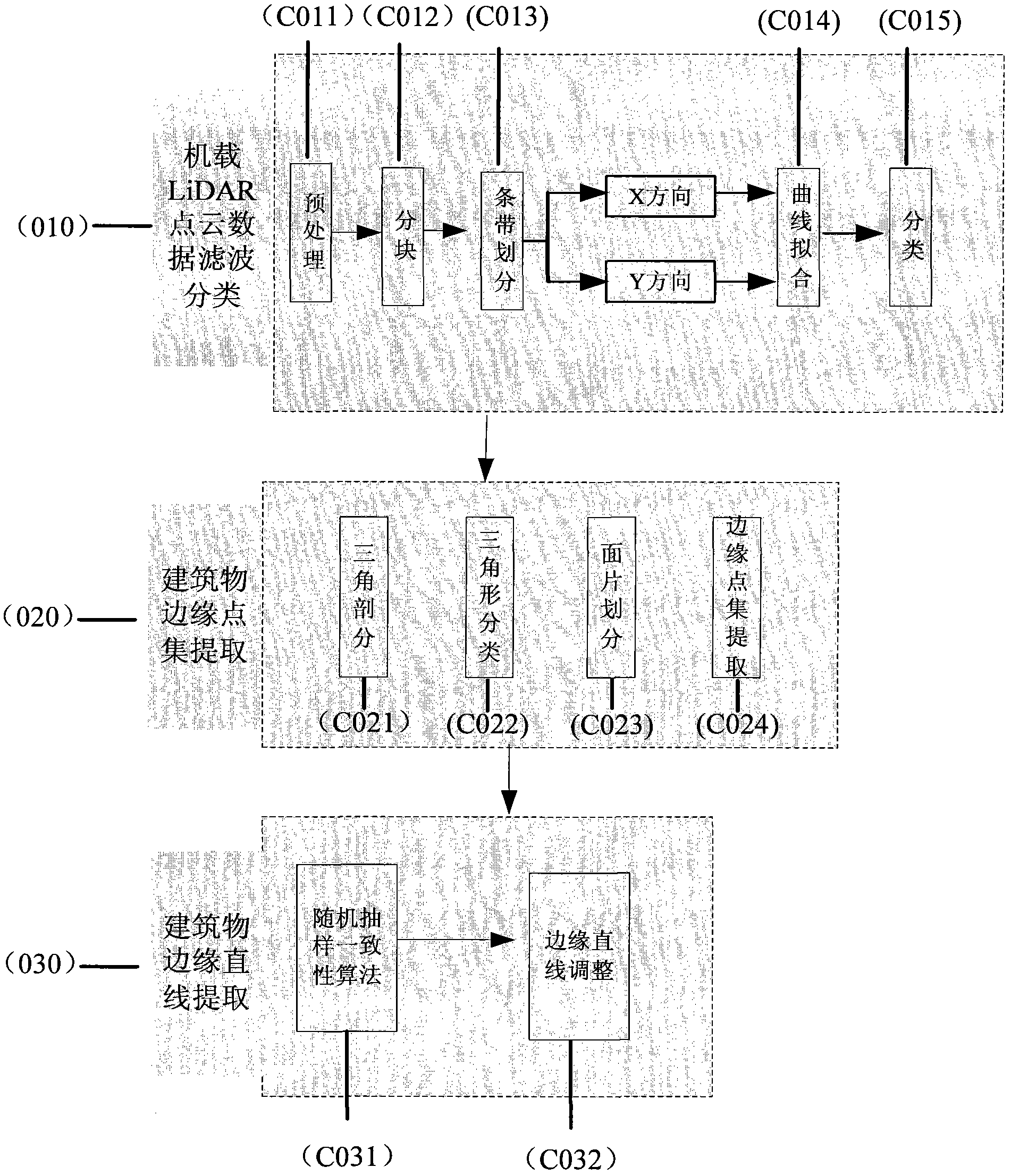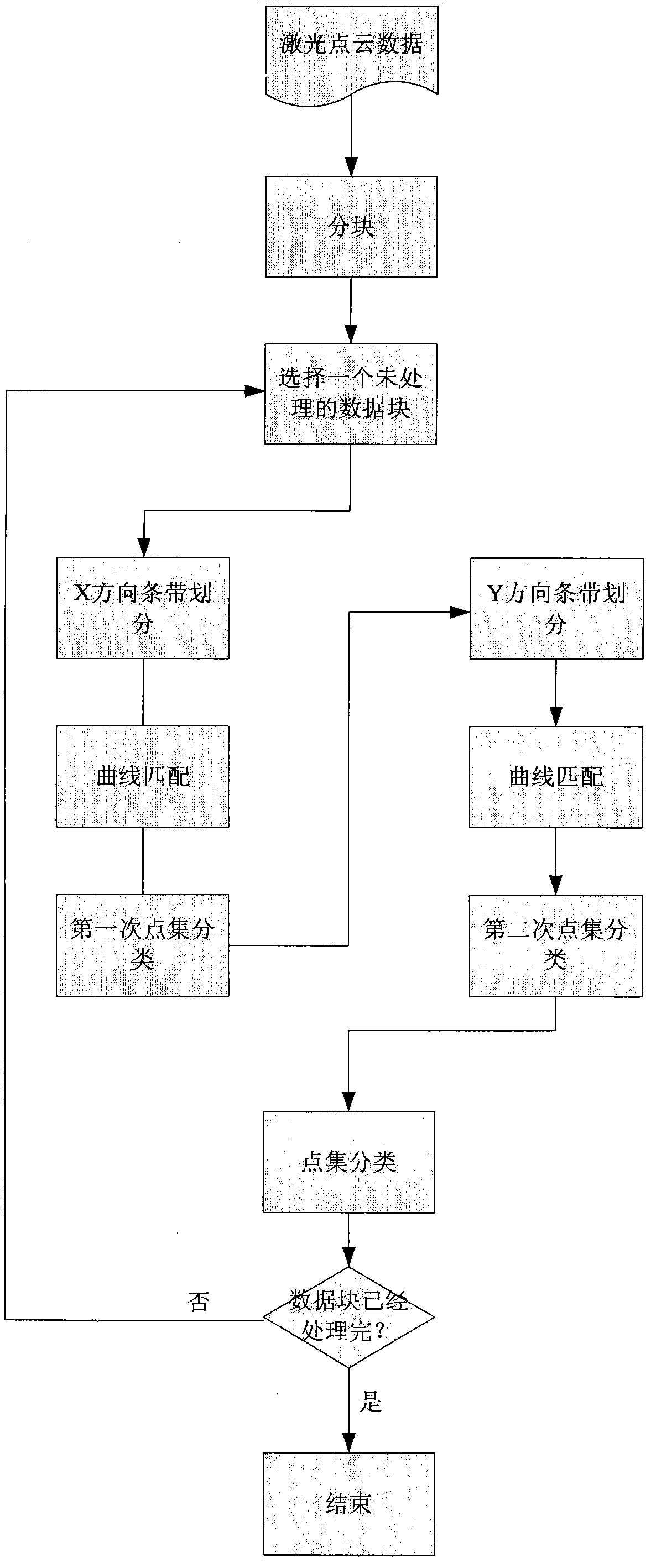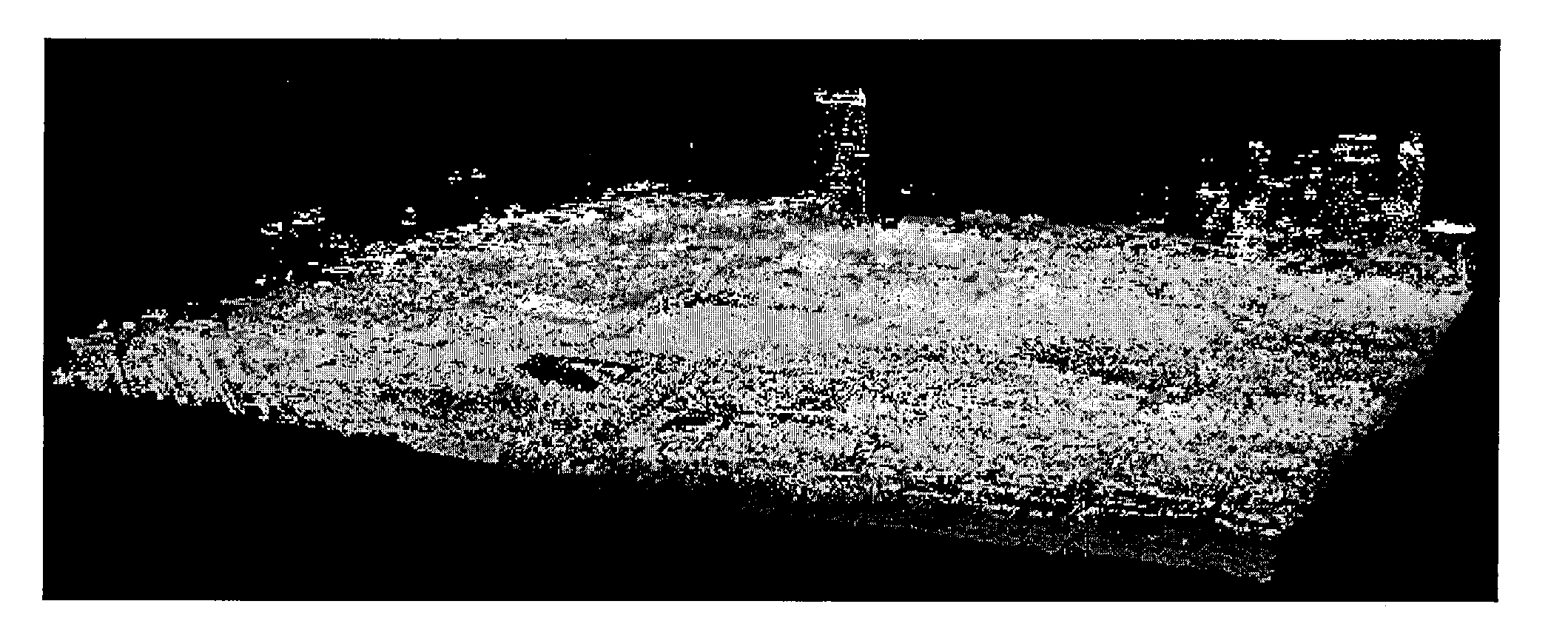Method for quickly extracting building three-dimensional outline information in onboard LiDAR (light detection and ranging) data
A technology for 3D contours and buildings, applied in 3D modeling, image data processing, instruments, etc., can solve the problems affecting the expansion and application of airborne LiDAR technology, and the development of data processing methods is lagging behind, so as to improve the efficiency of the algorithm and shorten the operation time. time, the effect of reducing complexity
- Summary
- Abstract
- Description
- Claims
- Application Information
AI Technical Summary
Problems solved by technology
Method used
Image
Examples
Embodiment Construction
[0035] The processing flow of building outline information extraction from airborne LiDAR 3D point cloud data is as follows: figure 1 As shown, the processing flow is divided into three parts:
[0036] 1. The processing flow of airborne LiDAR 3D point cloud data filtering and classification (C010) is as follows: figure 2 Shown: first read as image 3The airborne LiDAR three-dimensional point cloud data shown, and then the airborne LiDAR three-dimensional point cloud data is preprocessed (C011); read the airborne LiDAR three-dimensional point cloud data to obtain the total number of airborne LiDAR three-dimensional points, and The most value of the coordinates; then the original point cloud is divided into blocks (C012), which is convenient for computer processing; then two strips are divided (C013), and each data block is divided into strips in the X direction and the Y direction. The width of the strip is 3m; finally, curve fitting (C013) is performed on each divided strip...
PUM
 Login to View More
Login to View More Abstract
Description
Claims
Application Information
 Login to View More
Login to View More - R&D
- Intellectual Property
- Life Sciences
- Materials
- Tech Scout
- Unparalleled Data Quality
- Higher Quality Content
- 60% Fewer Hallucinations
Browse by: Latest US Patents, China's latest patents, Technical Efficacy Thesaurus, Application Domain, Technology Topic, Popular Technical Reports.
© 2025 PatSnap. All rights reserved.Legal|Privacy policy|Modern Slavery Act Transparency Statement|Sitemap|About US| Contact US: help@patsnap.com



